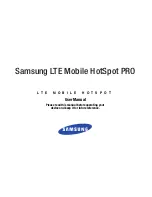
WEP on WDS Links
These additional fields appear when you select WEP as the encryption type:
•
Key Length
—
If WEP is enabled, specify the length of the WEP key as 64 bits or 128 bits.
•
Key Type
—
If WEP is enabled, choose either
ASCII
or
Hex
as the WEP key type.
•
WEP Key
—
If you selected
ASCII
, enter any combination of 0 to 9, a to z, and A to Z. If you selected
Hex
, enter hexadecimal digits (any combination of 0 to 9 and a to f or A to F). These are the RC4
encryption keys shared with the stations using the WAP device.
Note that the required number of characters is indicated to the right of the field and changes based on
your selections in the Key Type and Key Length fields.
WPA/PSK on WDS Links
These additional fields appear when you select WPA/PSK as the encryption type:
•
WDS ID
—
Enter an appropriate name for the new WDS link that you have created. It is important that
the same WDS ID is also entered at the other end of the WDS link. If this WDS ID is not the same for
both WAP devices on the WDS link, they will not be able to communicate and exchange data.
The WDS ID can be any alphanumeric combination.
•
Key
—
Enter a unique shared key for the WDS bridge. This unique shared key must also be entered for
the WAP device at the other end of the WDS link. If this key is not the same for both WAPs, they will
not be able to communicate and exchange data.
The WPA-PSK key is a string of at least 8 characters to a maximum of 63 characters. Acceptable
characters include uppercase and lowercase alphabetic letters, the numeric digits, and special symbols
such as @ and #.
WorkGroup Bridge
The Work Group Bridge feature enables the WAP device to extend the accessibility of a remote network. In
the Work Group Bridge mode, the WAP device acts as a wireless station (STA) on the wireless LAN. It can
bridge traffic between a remote wired network or associated wireless clients and the wireless LAN that is
connected using the Work Group Bridge mode.
The Work Group Bridge feature enables support for STA-mode and AP-mode operation simultaneously. The
WAP device can operate in one Basic Service Set (BSS) as an STA device while operating on another BSS
as a WAP device. When the Work Group Bridge mode is enabled, the WAP device supports only one BSS
for wireless clients that associate with it, and another BSS with which the WAP device associates as a wireless
client.
We recommend that you use the Work Group Bridge mode only when the WDS bridge feature cannot be
operational with a peer WAP device. WDS is a better solution and is preferred over the Work Group Bridge
solution. Use WDS if you are bridging the Cisco WAP150 and Cisco WAP361 devices. If you are not, then
consider the Work Group Bridge. When the Work Group Bridge feature is enabled, the VAP configurations
are not applied; only the Work Group Bridge configuration is applied.
Cisco WAP125 Wireless-AC/N Dual Band Desktop Access Point with PoE
57
Wireless Bridge
WEP on WDS Links
















































